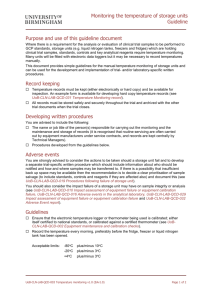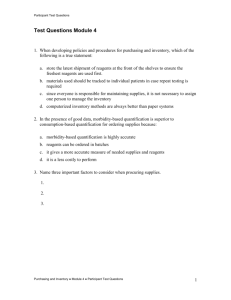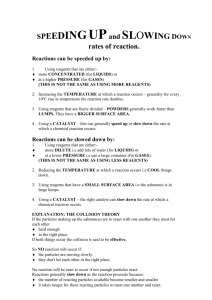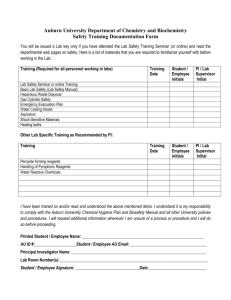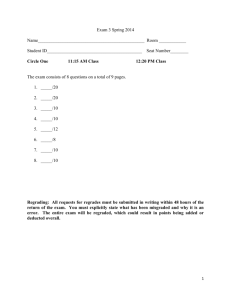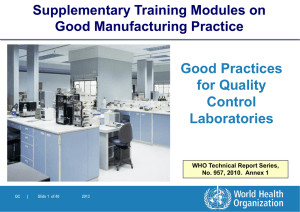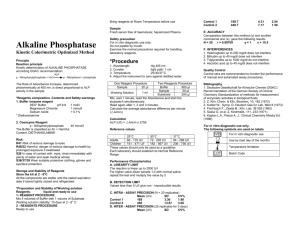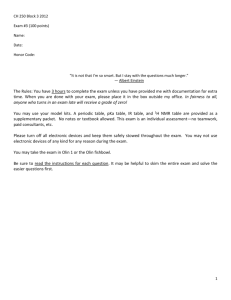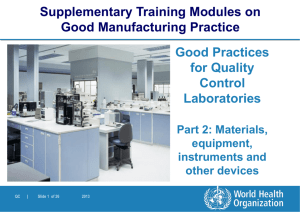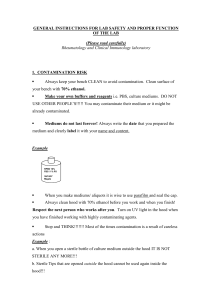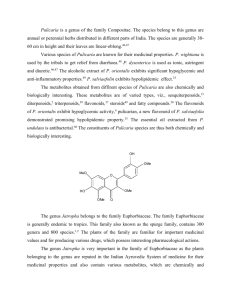UoB-CLN-LAB-QCD-013 Management and storage of analytical
advertisement
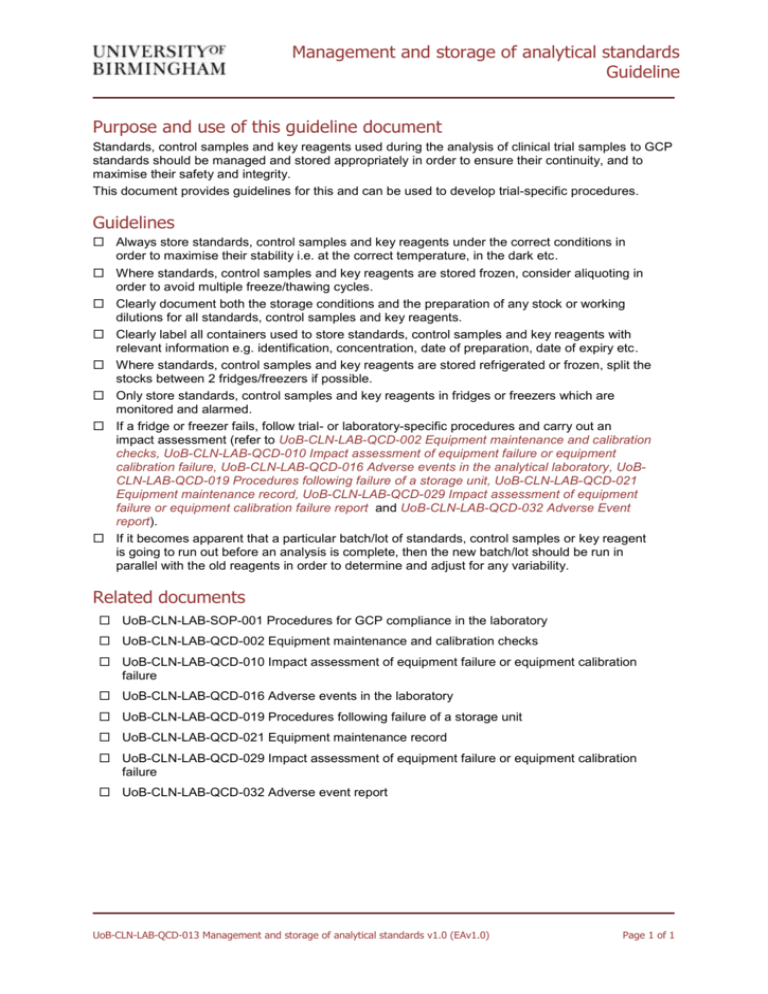
Management and storage of analytical standards Guideline Purpose and use of this guideline document Standards, control samples and key reagents used during the analysis of clinical trial samples to GCP standards should be managed and stored appropriately in order to ensure their continuity, and to maximise their safety and integrity. This document provides guidelines for this and can be used to develop trial-specific procedures. Guidelines Always store standards, control samples and key reagents under the correct conditions in order to maximise their stability i.e. at the correct temperature, in the dark etc. Where standards, control samples and key reagents are stored frozen, consider aliquoting in order to avoid multiple freeze/thawing cycles. Clearly document both the storage conditions and the preparation of any stock or working dilutions for all standards, control samples and key reagents. Clearly label all containers used to store standards, control samples and key reagents with relevant information e.g. identification, concentration, date of preparation, date of expiry etc. Where standards, control samples and key reagents are stored refrigerated or frozen, split the stocks between 2 fridges/freezers if possible. Only store standards, control samples and key reagents in fridges or freezers which are monitored and alarmed. If a fridge or freezer fails, follow trial- or laboratory-specific procedures and carry out an impact assessment (refer to UoB-CLN-LAB-QCD-002 Equipment maintenance and calibration checks, UoB-CLN-LAB-QCD-010 Impact assessment of equipment failure or equipment calibration failure, UoB-CLN-LAB-QCD-016 Adverse events in the analytical laboratory, UoBCLN-LAB-QCD-019 Procedures following failure of a storage unit, UoB-CLN-LAB-QCD-021 Equipment maintenance record, UoB-CLN-LAB-QCD-029 Impact assessment of equipment failure or equipment calibration failure report and UoB-CLN-LAB-QCD-032 Adverse Event report). If it becomes apparent that a particular batch/lot of standards, control samples or key reagent is going to run out before an analysis is complete, then the new batch/lot should be run in parallel with the old reagents in order to determine and adjust for any variability. Related documents UoB-CLN-LAB-SOP-001 Procedures for GCP compliance in the laboratory UoB-CLN-LAB-QCD-002 Equipment maintenance and calibration checks UoB-CLN-LAB-QCD-010 Impact assessment of equipment failure or equipment calibration failure UoB-CLN-LAB-QCD-016 Adverse events in the laboratory UoB-CLN-LAB-QCD-019 Procedures following failure of a storage unit UoB-CLN-LAB-QCD-021 Equipment maintenance record UoB-CLN-LAB-QCD-029 Impact assessment of equipment failure or equipment calibration failure UoB-CLN-LAB-QCD-032 Adverse event report UoB-CLN-LAB-QCD-013 Management and storage of analytical standards v1.0 (EAv1.0) Page 1 of 1
